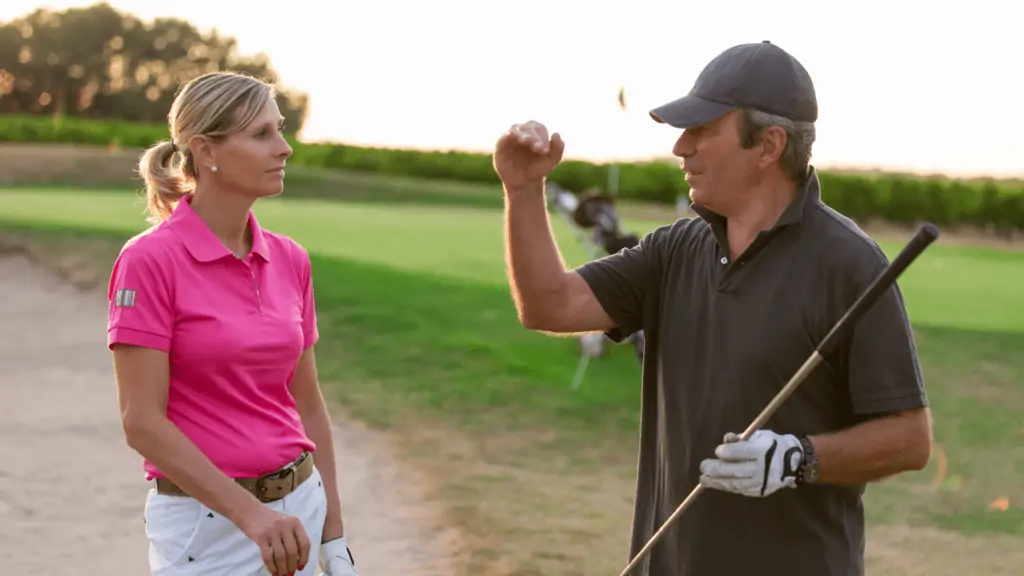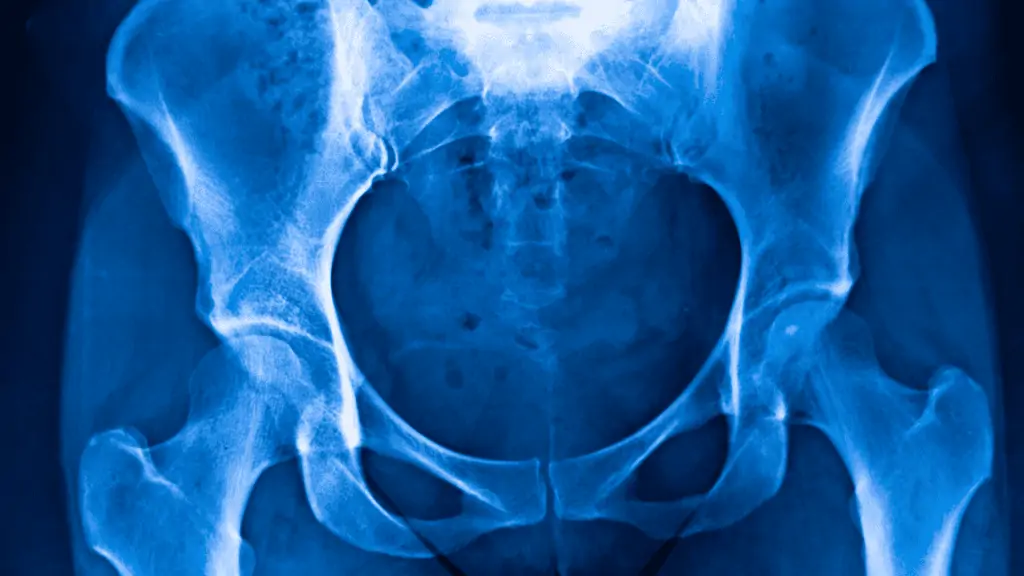Table of Contents
Medical Disclaimer
DISCLAIMER: THIS WEBSITE DOES NOT PROVIDE MEDICAL ADVICE
The information, including but not limited to, text, graphics, images and other material contained on this website are for informational purposes only. No material on this site is intended to be a substitute for professional medical advice, diagnosis or treatment. Always seek the advice of your physician or other qualified health care provider with any questions you may have regarding a medical condition or treatment and before undertaking a new health care regimen, and never disregard professional medical advice or delay in seeking it because of something you have read on this website.
As a golfer, you are always at risk of getting injured so it’s important to be aware of common golf injuries.
It’s not something unique to you but also to every other athlete – so here I’ll cover what most common injuries plague golfers and how to avoid them.
You might be surprised to learn that 90% of professional golfers also suffer a golf-related injury in their lifetime.
Since golf is a low-impact sport, people believe there’s a lower risk of injury than in high-octane sports such as football or boxing. However, the NHSR reported that the injury risk is higher for golf than for rugby. Common golf injuries are truly very susceptible to us all.
A golf swing engages all your major muscle groups, especially the legs, back, shoulders, etc. Naturally, these muscles and joints risk injury if you don’t take proper precautions.
Overexertion or improper form could result in serious injury and even disability.
Prevention is better than cure, especially in golf, because you don’t want to miss a day on the course. So, in this article, I’ll help you identify the most common golf injuries and also will suggest specific steps you could take to avoid them. Once you are injured, remember it’s best practice to always seek medical attention.
⛳️ Read Next: 9 Best 14 Slot Golf Bags + Top Tips for Bag Organization
1. Golf Ball Injuries
In a recent study provided by the National Library of Science of Medine found that for golfers ages 55 and older, the hospital admission rate was 5 times higher than that of younger patients.
The primary reason for the hospitalization was related to injury by a golf club (23.4%) or hit by a golf ball (16.0%). While the other injuries may be more prevalent, they didn’t result in higher hospitalization rates.
Tips to Avoid Golf Ball Injuries
There are several best practices that can easily avoid common golf injuries with golf balls. This concept also applies to being aware of your surroundings around other golfers.
- Always verify you have a clear shot before swinging your golf club.
- Be mindful of where you are standing.
- Never stand too close to others swinging their golf club.
Keep in mind, not everyone has perfect eyesight or 20/20 vision. Don’t assume they see you – always keep yourself a safe distance away. Golfing with prescription glasses or contacts is best also best practice as needed.
2. Golf Back Injuries
A round of golf, or even a range session, has players hunched over the ball and swinging the club that rotates principally around their back, and that can prove to be strenuous for the backbone and muscles when done over prolonged stretches at a time.
Tips To Avoid a Golf Back Injury
Warming up properly with stretch exercises that engage the back, such as toe touches and reverse lunges, can help loosen up the back muscles and prime them to support you throughout your round.
Golfers carrying bags hanging from their shoulders should avoid wiggling about too much and rest periodically.
For those with a pre-existing condition in the back, a back brace could alleviate much of the pain, allowing them to play with more freedom and ease. See your doctor for advice if this is a concern.
3. Shoulder Injuries from Golf
A Golf swing engages your shoulder blades. With this consistent action, it’s not surprising that shoulder injuries from golf occur.
Rotator cuff injuries are prevalent among golfers and are primarily caused by excessive use of force during the golf swing. Rotator cuff injuries increase with age and tend to be common among seniors.
You can also experience micro-tears and even outright ruptures if you don’t use the proper technique and just swing as hard as you can.
⛳️ Important: A tell-tale sign of a shoulder injury is the sensation of weakness in the shoulder accompanied by pain and discomfort. Raising the affected arm over your head could also prove to be difficult.
Tips to Avoid Golf Shoulder Injuries
Again, proper golf warm up exercises are essential. Golfers who skip warming up and right away start whacking away at the golf ball are at the most risk of injury.
Emphasizing technique instead of force is also advisable, as having the wrong takeaway or follow-through puts unnecessary stress on the shoulders.
Even if you’ve got slight shoulder pain, it’s recommended to take a few days off and seek medical attention when needed. Otherwise, your injury could get worse.
In this short 8-minute video, here are some excellent golf warmup exercises to practice before your big game.
4. Common Golf Wrist & Elbow Injuries
Wrist and elbows are both common golf injuries. They can take a beating during golf if you’re not following the proper technique. Over time, the rapid flexion and extension of the wrists and elbows start to wear them out.
Golfer Elbow Injuries

Golfers commonly experience elbow issues, and that’s why they even have an injury named after us.
The repeated and often rapid extension of the arms leads to soreness and inflammation where the tendons and muscles of the forearm attach to the bone.
This condition can potentially harm your ability as a golfer and is known to do irreversible damage if not treated properly.
Common Wrist Injuries – Tendonitis
Wrist tendonitis occurs when the fibrous tissue strands connecting the forearm to the wrist become inflamed and painful.
An easy one to ignore and leave untreated because as the wrist warms up, the pain dissipates, but that doesn’t mean the condition won’t get worse and cause severe problems if left that way.
Read Next: 11 Golf Push Cart Accessories to Add to Your Wishlist
5. Common Golf Knee Injuries
A golfer’s leading knee comes under a lot of stress, being the pivotal point in a golf swing. Your leading knee is whichever knee is in the front of the stance, depending on whether you’re left or right-handed, and supports the hips throughout the golf swing rotation.
Over time the ligaments in the knee tear up, causing pain and inflammation.
Tips to Avoid a Rupture in the Knee
A time-tested practice to avoid knee injury is to strengthen the core muscles and the muscles surrounding the knee joint such as the quads and hamstrings. This may be done through weighted squats, leg raises, etc. If you have a pre-existing condition in the knee, make sure you consult your doctor first.
⛳️ Read Next: The Incredible Gary Player Fitness Routine + Diet Tips
6. Golf Foot Injuries
All the power generated in a golf swing starts with and is generated through the feet. The whipping motion, displacement, and rotation of the body are all controlled by the feet, and they turn and twist into an entirely different position from where they were at the address.
The repeated pressure resulting from generating so much power from the feet and stabilizing an ever-turning body can, over time, cause issues of the foot, such as ankle tendonitis.
Another factor is the strain on the arches of golfers from all that walking throughout the round. You could feel sore in the soles if you’ve got weak arches. Investing in a nice comfortable pair of golf shoes that support your feet is an excellent place to start.
7. Hip Injuries from Golf

Generally speaking, the hip joint is a well-strengthened and robust joint that carries humans whether walking, standing, or even lying down.
But in golf, your hips take a severe beating, and too much rapid flexion and rotation of the hip joint could sometimes result in hip tendonitis or micro-tears in the hip soft tissue are considered common golf injuries.
Tip to Avoid Hip Injuries from Golf
Keeping a strong core, glutes, and leg muscles are essential and basic steps toward preventing injuries, especially in the lower body. A weaker base is always injury prone.
😂 Read Next: The 58 Greatest Golf Quotes of All Time
8. Heat Strokes & Sun Burns
The sun is often overlooked when it comes to injury-causing things, but it not only burns the skin, which is the largest and most exposed part of the human body.
Playing golf under the sun for over 4 hours can get you dehydrated in extreme weather conditions.
Tips to Avoid Heat Strokes
The best practice to avoid heat strokes is to stay hydrated and preferably play during the cooler hours of the day. Staying under the shade and pacing yourself while walking to your ball all conserve your energy.
According to the American Cancer Society, rates of skin cancer in the United States are on the rise, despite most cases being preventable because they’re related to sun exposure and indoor tanning. A sun hat, quality sunscreen, and a breathable sports shirt with sleeves are good ways to avoid sunburns.
I also wrote this article about the best golf coolers so you can stay hydrated.
Final Thoughts on Common Golf Injuries
Golf injuries are more common than you’d expect. You’ve likely faced at least one of them as a golfer. When injured, stop golfing immediately and seek advice from your doctor to avoid further complications. While golfing maybe a fun sport, your health matters most.

